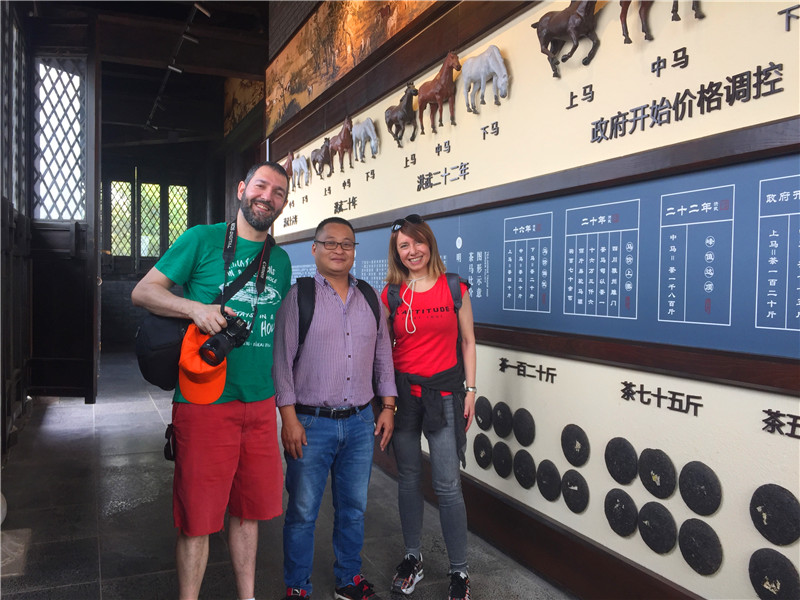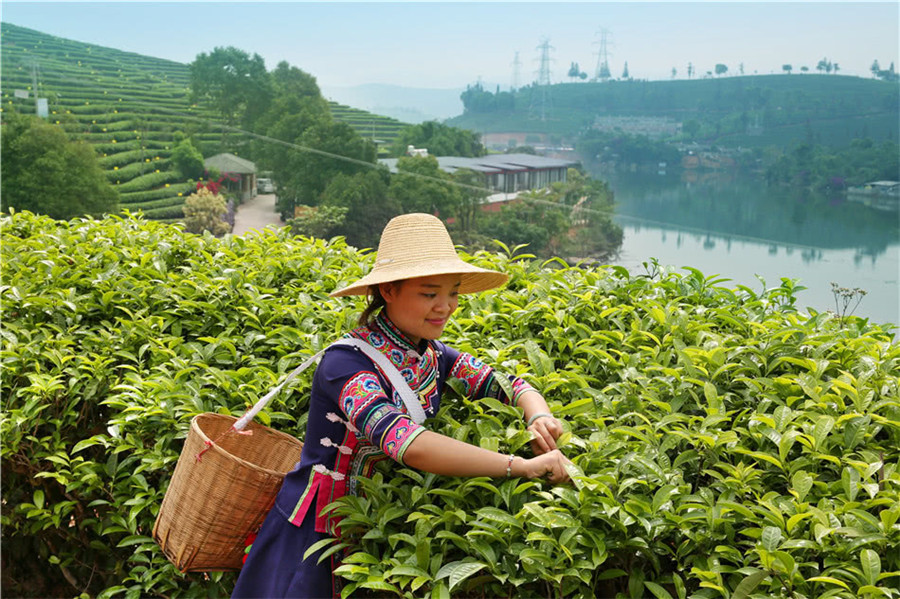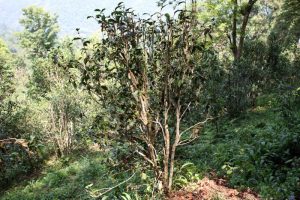
9 Days Tea Culture Travel Guide in Puer City-9 Days Puer Tour
Trip Introduction
Pu’er, renowned as one of the world’s significant tea origins, offers a deep dive into Puerh tea culture, drawing countless visitors seeking to explore its rich tea history. Beyond its tea fame, Pu’er captivates travelers with its diverse historic sites and the vibrant customs of its various ethnic groups, including the Hani, Yi, and Dai. These cultural experiences, coupled with the region’s natural beauty, make Pu’er an unforgettable destination.
Tour Highlights
- Puerh Tea Culture: Explore the origins of the famous Puerh tea, visiting plantations and learning about traditional tea-making processes.
- Xiniuping Scenic Area: Discover rare and valuable plants and animals in this lush and diverse landscape.
- Lancang River Exploration: Witness the mighty Lancang River, which flows through multiple Southeast Asian countries as the Mekong River.
- Historic Sites: Visit ancient landmarks such as the Jingdong Confucian Temple and the Menglian Chieftain’s Mansion.
- Ethnic Villages: Immerse yourself in the cultural richness of ethnic villages, experiencing the traditions and daily lives of the Hani, Yi, and Lahu people.
- Scenic Wonders: Enjoy breathtaking natural sites including Meizi Lake, Mengma Waterfall, and Jingmai Mountain.
Travel Tips
- Cultural Sensitivity: Pu’er is home to multiple ethnic groups. Respect local customs and traditions during your visit.
- Meals: Breakfast and lunch are at your own expense. Be sure to try local specialties such as hotpot, bamboo-cooked dishes, and fresh seafood.
- Packing: Bring comfortable clothing suitable for both hot days and cooler evenings, especially if you plan to explore mountainous areas.
Day-by-Day Itinerary
Day 1: Lijiang to Pu’er
- 07:00: Departure from Lijiang.
- 19:00: Arrival in Pu’er after a scenic 12-hour drive (876.4 km).
- Dinner: Enjoy a traditional hotpot of squid stewed with chicken.
Day 2: Xiniuping Scenic Area
- Morning: Explore the Xiniuping Scenic Area, 30 km south of Simao District.
- Lunch: Dine at Xiaoye Restaurant.
- Afternoon: Continue exploring the scenic area.
- Dinner: Pizza Pig Restaurant.
- Overnight: Stay at Pu’er Qianhe Hotel.
Day 3: Lancang River & Xiaoganlanba Scenic Area
- 09:00: Visit the Lancang River, tracing its journey through Pu’er.
- 12:00: Explore the Xiaoganlanba Scenic Area, known for ancient Neolithic ruins.
- 15:00: Visit the historic Cuiyun Cave.
- Lunch: Sala Restaurant.
- Dinner: Oubalaile Korea Restaurant.
- Overnight: Pu’er Qianhe Hotel.
Day 4: Anatropous Root Park & Meizi Lake
- 10:00: Discover the Anatropous Root Park, home to a giant banyan tree.
- 14:00: Relax by the picturesque Meizi Lake.
- Lunch: Aini Zhuangyuan Restaurant.
- Dinner: Shilixiang Restaurant.
- Overnight: Pu’er Qianhe Hotel.
Day 5: Jingdong Confucian Temple & Mojiang
- 10:00: Visit the Jingdong Confucian Temple, a well-preserved historic site.
- 14:00: Explore the Tropical of Cancer Landmark Park in Mojiang.
- Lunch: Ginseng Chicken Hotpot Restaurant.
- Dinner: Sichuan Restaurant.
- Overnight: Pu’er Qianhe Hotel.
Day 6: Menglian Chieftain’s Mansion & Shangcheng Buddhist Temple
- 09:00: Visit the historic Menglian Chieftain’s Mansion.
- 12:00: Explore the serene Mengma Waterfall.
- 15:00: Visit the Shangcheng Buddhist Temple, a cultural hub for the Dai people.
- Lunch: Nannan Dai Flavour Restaurant.
- Dinner: Shiping Restaurant.
- Overnight: Pu’er Qianhe Hotel.
Day 7: Nayun Old Town & Nuofu Church
- 09:00: Explore Nayun Old Town, the last Dai ethnic old town in China.
- 12:00: Visit the historic Nuofu Church.
- 15:00: Discover Laodabao Lahu Ethnic Village, home to the national intangible heritage “Du Pa Mi Pa.”
- Lunch: Tianyuan Restaurant.
- Dinner: Guo’s Shilixiang Restaurant.
- Overnight: Pu’er Qianhe Hotel.
Day 8: Jingmai Mountain & Mengsuo Dragon Pool
- 09:00: Visit Jingmai Mountain, renowned for its ancient Puerh tea plantations.
- 14:00: Explore the serene Mengsuo Dragon Pool.
- Lunch: Huikang Restaurant.
- Dinner: Meizhou Seafood Restaurant.
- Overnight: Pu’er Qianhe Hotel.
Day 9: Return to Lijiang
- 08:00: Depart Pu’er for Lijiang.
- 20:00: Arrive in Lijiang after another scenic 12-hour drive.
Shopping Recommendations
Pu’er is famous for its rich produce and crafts, including:
- Walnuts, ferns, bamboo shoots, and edible mushrooms
- Purple glutinous rice, fragrant glutinous rice
- Mango, sweet wine, and wine packed in bamboo
- Woodcarvings and rattan crafts

These items make perfect souvenirs to remember your journey through Pu’er.
Shopping recommendation
Pu’er boasts a wide area of mountains and hills, with a high coverage of vegetation which is in favour of the local forestry. Plus the ample sunshine, Pu’er is such a place that is suitable for tropical and sub-tropical crops to grow. Among the local produce, walnuts, ferns, bamboo shoots and assorted edible mushrooms are popular specialties. In addition, the purple glutinous rice, fragrant glutinous rice, mango, sweet wine, wine packed in bamboos, woodcarvings, rattan crafts and so on are not bad souvenirs for tourists.

 7 Days GolfingTour
7 Days GolfingTour
 8 Days Group Tour
8 Days Group Tour
 8 Days Yunnan Tour
8 Days Yunnan Tour
 7 Days Shangri La Hiking
7 Days Shangri La Hiking
 11 Days Yunnan Tour
11 Days Yunnan Tour
 6 Days Yuanyang Terraces
6 Days Yuanyang Terraces
 11 Days Yunnan Tour
11 Days Yunnan Tour
 8 Days South Yunnan
8 Days South Yunnan
 7 Days Tea Tour
7 Days Tea Tour
 8 Days Muslim Tour
8 Days Muslim Tour
 12 Days Self-Driving
12 Days Self-Driving
 4 Days Haba Climbing
4 Days Haba Climbing
 Tiger Leaping Gorge
Tiger Leaping Gorge
 Stone Forest
Stone Forest
 Yunnan-Tibet
Yunnan-Tibet
 Hani Rice Terraces
Hani Rice Terraces
 Kunming
Kunming
 Lijiang
Lijiang
 Shangri-la
Shangri-la
 Dali
Dali
 XishuangBanna
XishuangBanna
 Honghe
Honghe
 Kunming
Kunming
 Lijiang
Lijiang
 Shangri-la
Shangri-la
 Yuanyang Rice Terraces
Yuanyang Rice Terraces
 Nujiang
Nujiang
 XishuangBanna
XishuangBanna
 Spring City Golf
Spring City Golf
 Snow Mountain Golf
Snow Mountain Golf
 Stone Mountain Golf
Stone Mountain Golf
















